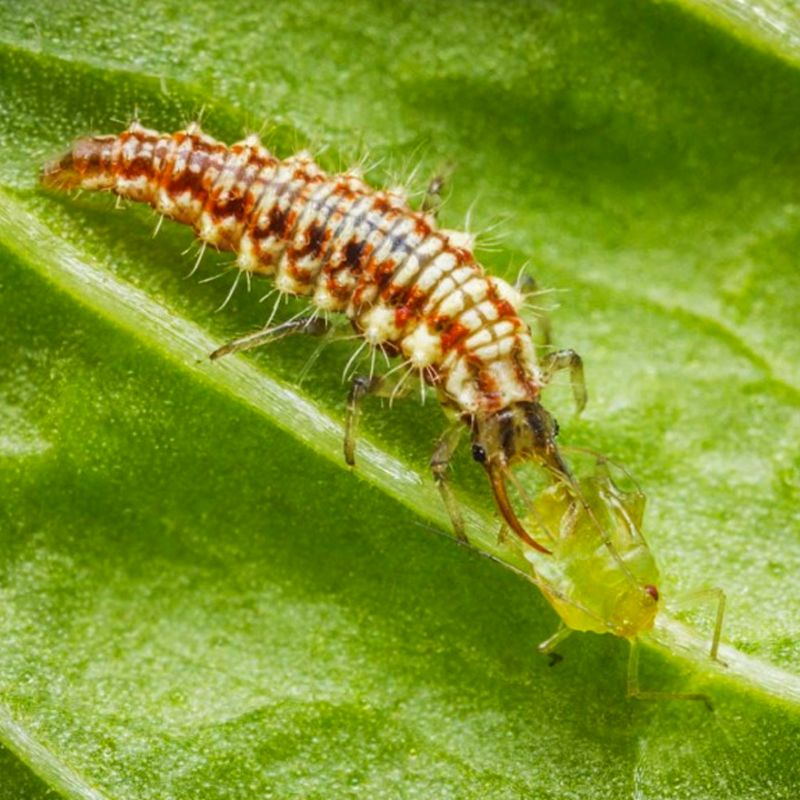
LACEWINGS
CRISOPAS


How do they act?
Lacewings are beneficial insects recognized for their effectiveness as biological controllers. Adults are green or light brown, with transparent wings, while their larvae are true predators. These larvae, known as "aphid lions", have curved jaws with which they catch and suck their prey. Its action is fast and effective, especially during its larval phase, being a very useful natural tool to keep various pests at bay in the orchard or garden.
How to attract them?
To attract and keep lacewings in your crops, keep the following recommendations in mind:
- Avoid chemical pesticides, especially contact insecticides that also eliminate beneficial insects.
- Plant flowers that produce nectar and pollen, such as dill, fennel, yarrow or dandelion, which feed the adults.
- Leave areas with natural vegetation or hedges close to the crop, where they can take refuge and reproduce.
- Avoid excessive pruning that eliminates natural shelters.
- Do not apply insecticidal soaps or oils directly on the lacewing larvae.
- If you introduce them commercially, do it at cool times of the day, preferably at dawn or dusk.
What pests do they control?
Lacewings act against a wide variety of pests, highlighting their effectiveness against aphids, thrips, mites, insect eggs, mealybugs, whitefly larvae and small worms. This wide range of prey makes them valuable allies in horticultural, ornamental and fruit crops. Both in their larval and adult stages they contribute to maintaining a natural balance in the crop ecosystem.
PRODUITS RECOMMANDÉS
Les produits présentés sont des recommandations et ne sont pas nos propres produits. En tant qu'associés Amazon, nous gagnons des revenus grâce aux achats de produits recommandés.



















